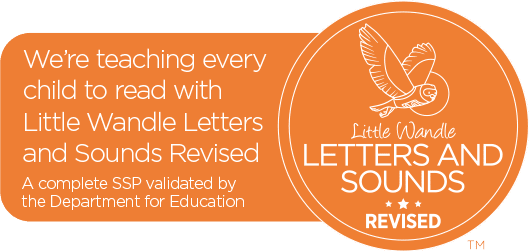At St. Andrew’s, we pride ourselves on creating an environment that encourages and embraces a love of learning. We aim to provide a stimulating environment, using a range of rich texts to teach all elements of English.
Using our end point documents, we ensure that the children are taught relevant subject content, supporting and challenging them where appropriate.
Speaking and Listening
Speaking and listening is taught throughout English lessons as part of the sequence of learning, using strategies such as ‘Oral Story Telling’ and ‘Hot Seating’. However, it is also embedded in many other areas of the curriculum, where children are encouraged to work collaboratively to discuss their understanding and learning, whilst practising new and rich vocabulary in grammatically correct and meaningful ways.
In addition, children are given opportunities to talk, give opinions and listen to a variety of viewpoints during our daily acts of worship, performances and our Come and See days.
Reading
At St. Andrew’s, we believe that learning to read is one of the most important aspects of the children’s education. It opens doors and allows the children to enter new worlds. It also allows them to access and thrive in all subject areas so that they can benefit from a broad, balanced and ambitious curriculum.
Word Reading and Phonics – The teaching of reading commences in The Early Years Foundation Stage through the  use our Systematic Synthetic Phonics scheme, Little Wandle. This approach teaches children to associate a grapheme (written letter/s) with a particular phoneme (sound/s). These sounds can then be orally blended to produce a whole world.
use our Systematic Synthetic Phonics scheme, Little Wandle. This approach teaches children to associate a grapheme (written letter/s) with a particular phoneme (sound/s). These sounds can then be orally blended to produce a whole world.

Comprehension – Teachers and Teaching Assistants use the VIPERS approach to ensure a range of appropriate questioning; Vocabulary, Inference, Prediction, Explaining, Retrieval and Sequencing/Summarising. Questions build in complexity as children move up through the school to ensure that there is a clear progression in reading skills.
Independent Reading Books –
EYFS and Key Stage 1 – When appropriate for the child, they will take home picture books without words so that they begin to understand characters and plots by talking about what they can see. This helps to build vital inference skills and develop an early love of books.
Once a child is secure with the first Phase 2 sounds, they will be provided with independent reading books, which closely match the taught graphemes. Children will continue to receive independent reading books closely matched to their phonic ability until they are secure in all of the Phase 5 sounds. This includes tricky words, taught as part of the phonics scheme.
Children are encouraged to read an independent book more than once at home to build confidence and fluency in their expression.
Once a child has mastered Phase 5, they will move onto books containing words that are not necessarily decodable and follow spelling rules. They will also include more complex sentence structures and punctuation.
Key Stage 2 – To ensure that children continue to select independent reading books from school closely matched to their reading ability, each class teacher will group their pupils into a ‘Book Club’. Class libraries contain appropriate books suitable for that ‘Book Club’ depending on whether the child is WTS (working towards standard), EXS (expected standard) or GDS (greater depth standard) for their year. These will contain a range of text types including fiction, non-fiction and poetry.
Writing
Children should be invited and encouraged to write for all occasions, being given opportunities to write for a purpose, along with topic-based links being made as much as possible. Throughout the school, children learn to write in fiction and non-fiction genres alongside a variety of poetry.
Writing will be modelled through the use of shared writes for the children to learn from and make their own. Strong and engaging texts will be used to allow the children to immerse themselves in different worlds and structure their writing in an appropriate and clear way. Where appropriate, the teaching of grammar will be intertwined within a sequence of lessons, though some may be taught discretely.
In Early Years and Year 1, the teaching of spelling will take place through Little Wandle, which also addresses the tricky and high frequency words for those stages. Years 2 to 6 use the Herts for Learning ‘Essentials for Spelling’ scheme, which allows for revision of previous learning alongside the correct spelling rules and exception rules for each phase. Please see our English and Handwriting Policies for further information.
- Spoken Language Progression in Skills (420.60KB)
- St Andrew's End Points for Writing (543.79KB)
- St Andrew's End Points for Reading (510.39KB)
